Why we need to unleash the power of the fastest growing plant on Earth
By Dr Hans Friederich | May 13, 2021
“Bamboo is flexible, bending with the wind but never breaking, capable of adapting to any circumstance. It suggests resilience, meaning that we have the ability to bounce back even from the most difficult times,” Ping Fu.
But the fastest growing plant on Earth is more than a metaphor for human resilience. For world leading bamboo expert, Dr Hans Friederich, the bounty of opportunity both for climate resilience and mitigation strategies means bamboo should form part of countries’ Nationally Determined Contributions to the Paris Agreement. Here, Friederich identifies the opportunities and challenges to unleashing a thriving global bamboo economy.
A global opportunity
While most commonly associated with China, there are more than 1640 different bamboo species in the world, and natural bamboo grows abundantly in Africa, Asia and Latin America. There is local bamboo in the Caribbean, in southern states of the US and in some Pacific Islands.
Even Europe, where the plant is not part of its natural fauna, could become a new source of bamboo by establishing plantations, especially in southern Europe. Here, there are already several healthy bamboo nurseries and small woodlots in France, Italy, Portugal and Spain.
While planting is starting to take place, we need to plant more bamboo. Lots more. But we also need to avoid clearing native forests to create space for bamboo. Bamboo can grow on degraded land and in soils that are not productive, so planting bamboo should not be done instead of tree planting, but in addition to afforestation with trees.

Bamboo should not replace native forests. Photo: Unsplash.
Carbon sinks
Research shows the combination of rapid growth and continuous annual recurrence of shoots and bamboo stems (culms), means that over time bamboo groves can sequester more carbon than tree forests. And where traditional wood requires 20 to 50 years to reach its full height, new bamboo stems often only need one year to grow to full height. Once the plantation reaches maturity it creates 15 times more wood per hectare than tree forests.
Reports from Bamcore in the US and from INBAR in China make the case that bamboo plantations are more effective natural carbon sinks than tree plantations, and after a period of time the total CO2 absorbed by a bamboo woodlot outperforms that absorbed by a tree woodlot.
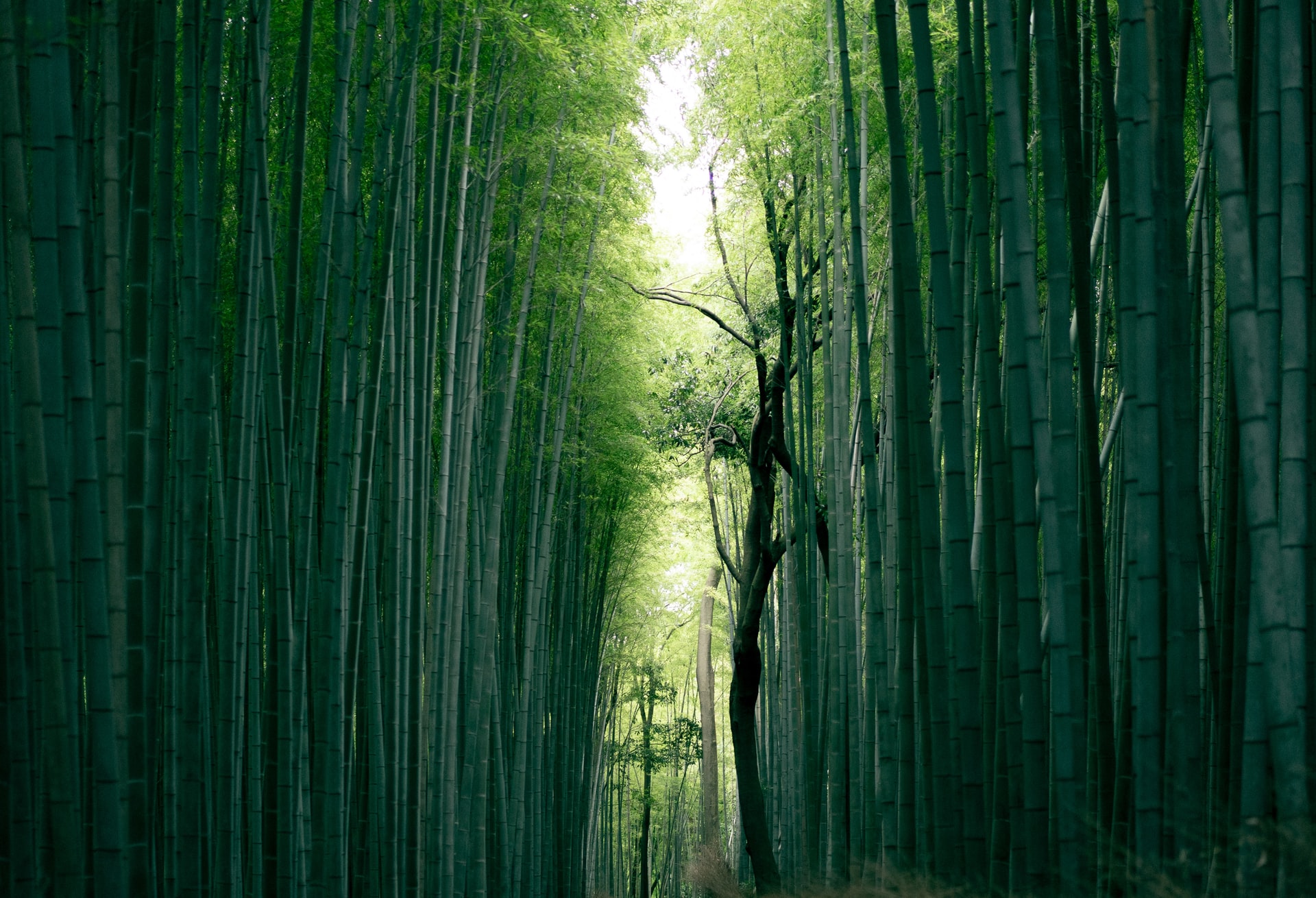
A bamboo grove can, over time, sequester more carbon than a tree forest. Credit: Unsplash.
Renewable energy
The UN Forum on Forests estimates that more than 2 billion people still rely on wood fuel to meet their primary energy needs, such as cooking and heating, and much of this is charcoal. Most of the wood is generally harvested unsustainably, often illegally, and this is a principal driver of deforestation in some countries. Bamboo could be a sustainable alternative for wood charcoal, especially in Africa and Asia, and lucrative African bamboo charcoal enterprises for household fuel already exist in Ethiopia, Ghana, Uganda and Zambia.
Bamboo fibre can even be used to manufacture the blades of turbines for hydropower and wind energy. This is an emerging field of research and development, and there are still questions about the suitability of bamboo fibre for the production on large-scale blades, but the first modern windmills with medium-sized bamboo blades are in operation in China.
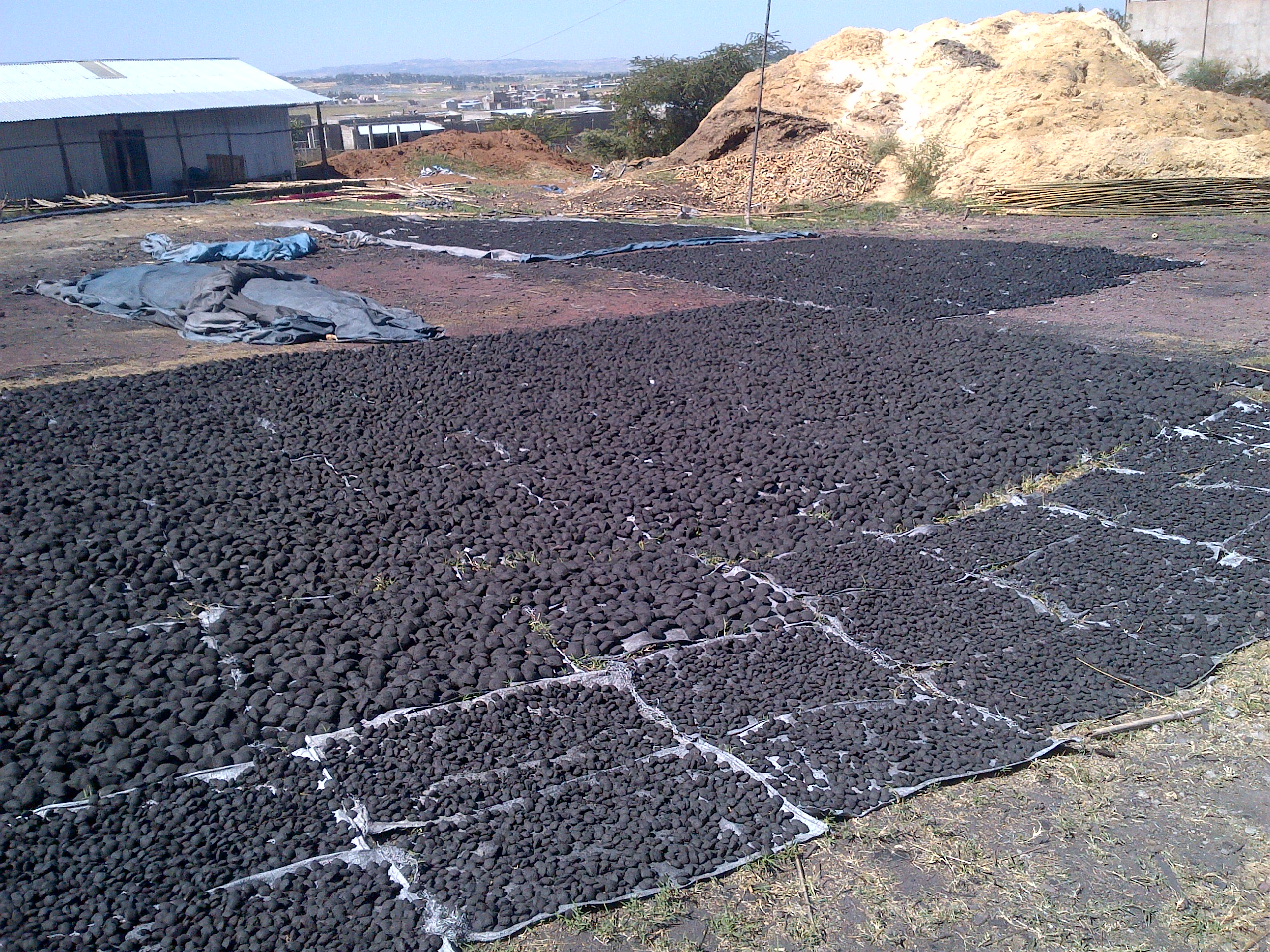
ADAL charcoal, Addis Ababa, Ethiopia. Credit: Hans Friederich.
Land restoration
The extensive root and rhizome system make bamboo a unique and effective tool to control erosion, maintain slope stability and avoid landslides, which will become an increasingly critical issue as the effects of climate change become more severe.
Ghana, India the Philippines and Tanzania are just some of the countries that are using bamboo to restore degraded land, as bamboo will grow in poor soils and do not need large-scale application of fertilizers or agrochemicals. After establishing the young plants, new plantations also do not, in most cases, require irrigation.
But if we want to unlock this potential, we need more training and awareness raising – across the board, and in different languages. Managing a bamboo plantation is different from looking after a tree plantation.
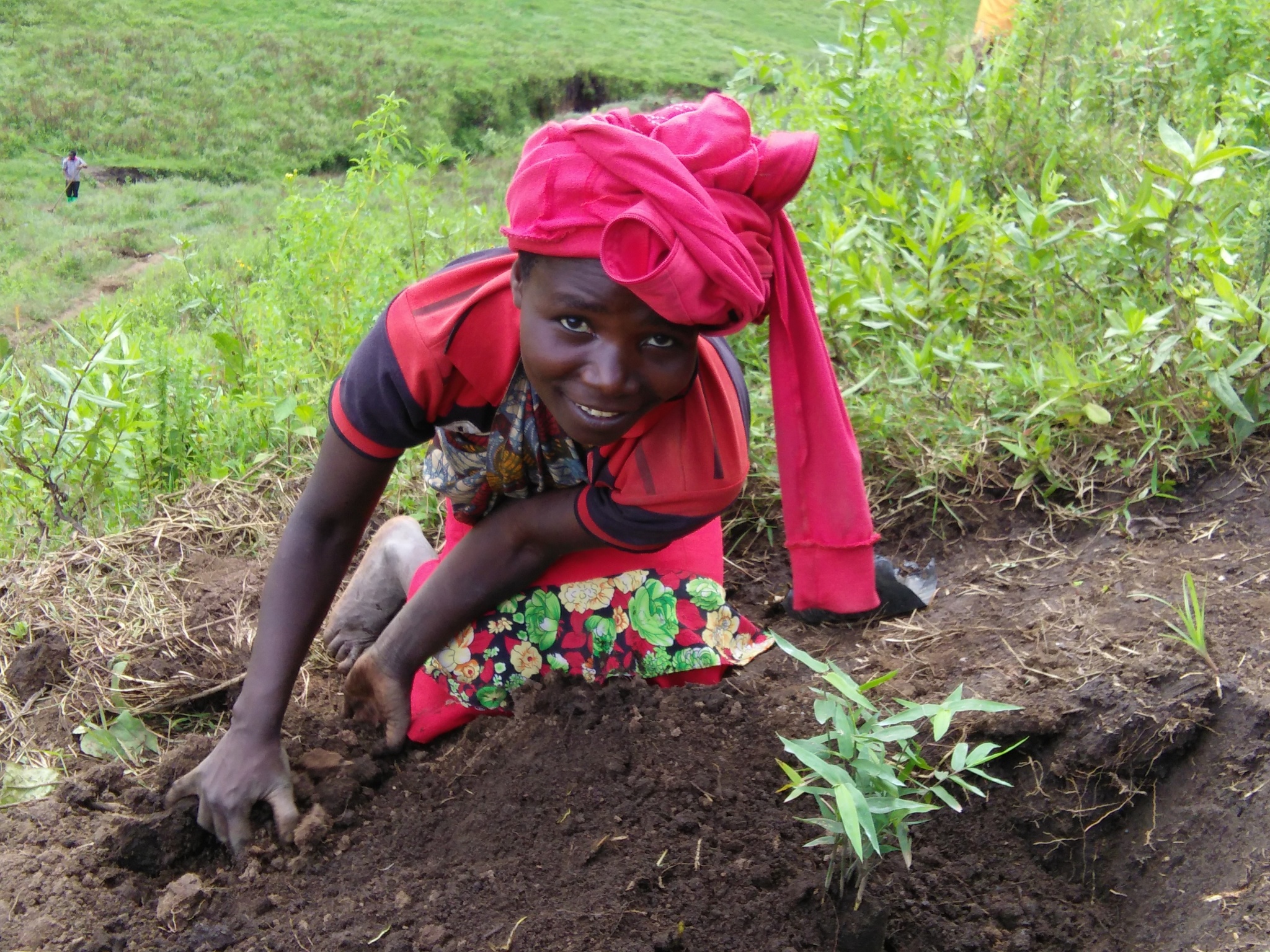
Bamboo planting on degraded lands in Tanzania. Credit: Hans Friederich.
Food security
In China, bamboo has been instrumental in raising millions of local farmers and their families out of poverty, and young bamboo shoots are a staple food in many Asian countries.
With relatively high nutritive and evergreen characteristics, the leaves of certain bamboo species are in high demand. In southern China, the leaves are used to brew tea, and they can also be critical supplementary fodder for livestock, small stock and even fish farms.
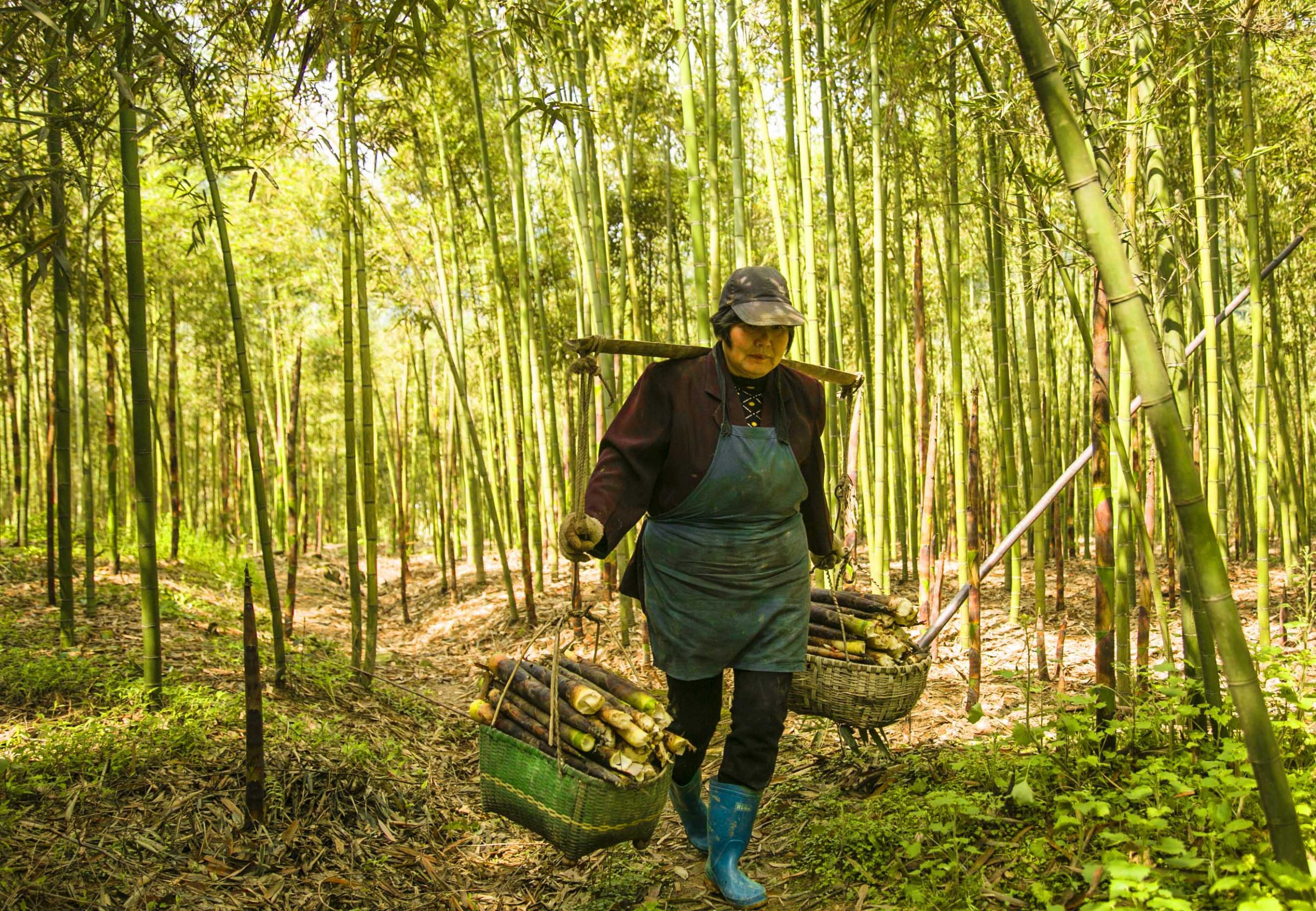
Collecting bamboo shoots. Credit: INBAR.
Shelter and housing
For affordable housing and dwellings that can be rapidly erected to respond to earthquakes or floods and other disasters, bamboo is emerging as the construction material of choice. After the 2008 earthquake in Sichuan, bamboo plantations recovered within one year, while tree forests were devastated for many years.
A number of documented cases in Latin America testify how bamboo structures better withstand the impact of earthquakes than concrete housing, and this understanding has been applied in other countries, like Nepal. Local bamboo is also being used as the primary construction material for nearly all structures in the Rohingya Refugee Camps and Sites, Cox’s Bazar Region, Bangladesh, and in the Philippines bamboo houses are constructed as typhoon-proof accommodation.
Jobs and income
The opportunity that bamboo provides for job creation has been explored in conflict zones, and the “Guadua for Peace” project in Colombia is a case in point. The main aim of the project was to contribute to reconciliation and rural development in the community of La Macarena. The focus was a group of displaced, ex-combatants, and those who had lived through the conflict. A bamboo-based rural development model that provided employment through sustainable management and processing of bamboo was developed and implemented, and the model is replicable in other areas.

Guadua for Peace” project. Credit: INBAR.
Circular economies
Finally, bamboo products can often be used as alternatives to products made with a much higher carbon footprint, and bamboo products can be a key component of a circular economy. Bamboo is an excellent tool to illustrate efficient waste management. In fact, every part of the bamboo plant can be used for manufacturing.
But manufacturing and processing of bamboo products requires specialised skills and know-how. Knowledge must be communicated in different languages to unleash this potential in other countries.
Bamboo is starting to play a significant role in modern urban and interior design, with bamboo cladding, paneling and flooring being used by architects and designers throughout the world. Madrid Airport was one of the first major projects to use bamboo for a ceiling, and more recent projects include Jakarta Hotel in Amsterdam, City Life mall in Milan and the Grand Theatre in Wuxi, China.
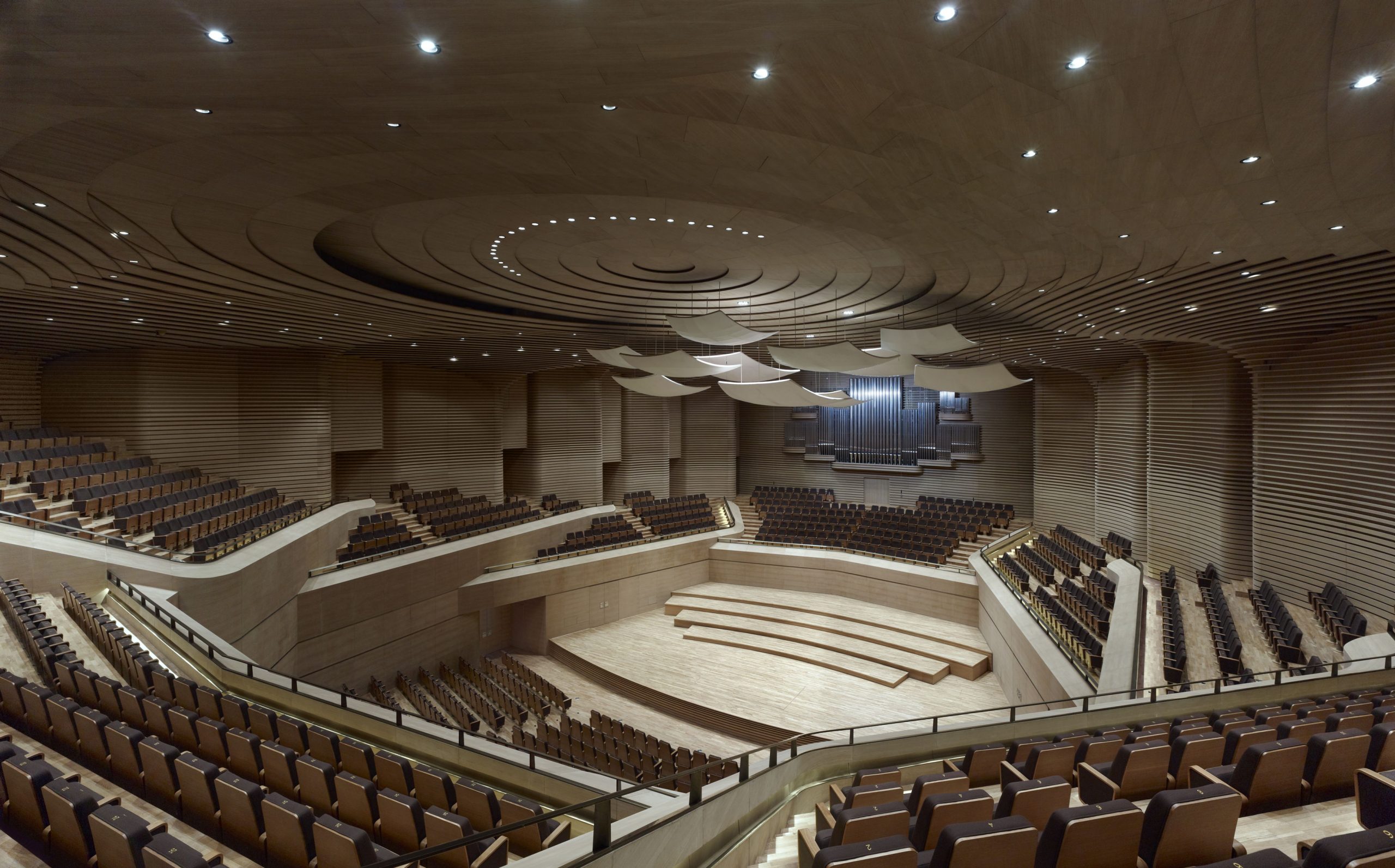
Grand Theatre in Wuxi, China. Wikimedia Commons.
Dr Hans Friederich is the former Director-General of the International Bamboo and Rattan Organisation, a treaty-based inter-governmental organisation with Headquarters in Beijing, China, that promotes bamboo and rattan. He is Ambassador of the World Bamboo Organisation and a partner in the European Bamboo Programme managed by Dutch company Bamboologic.








